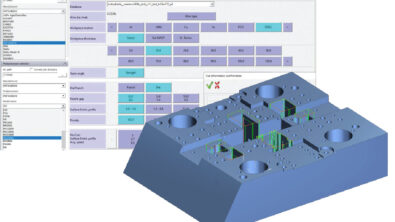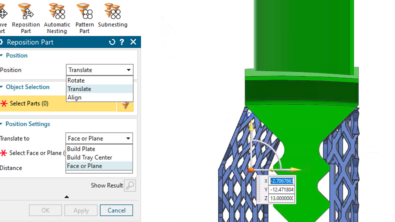Do You Need To Make Digital Cutting Tool Catalogs Accessible From Any Application?

The world today is becoming increasingly digital. There is an application, “APP,” for almost every human need. Yet it seems that we are quite lagging in the manufacturing cutting tool world when it comes to digitalization. Almost every cutting tool vendor has a web catalog. Some even have a Tool Advisor that helps you to select the best tool for an operation. The functionality provided in this tool is whatever the vendor decides to provide. The content is limited to a specific tool vendor. On the other hand, there are generic applications that allow you to select any tool but they do not have the access to the catalogs, so you have to manually enter the tool data. The availability of open Digital Tool Catalogs in a standard format would enable access to these catalogs from any application.
The lack of a standard is an issue for the tool vendors as well. They have to create cutting tool data in different formats, for different applications and, sometimes, for different users. This creates a huge burden on their resources. A typical tool catalog has about 40,000 components with about 1,000 new tools being introduced every year just by this one vendor! Just imagine the effort of creating 3D data and drawings for these tools. Also, the vendors have to protect their design and they will not give you the CAD file they have used for their design but they have to simplify them.
Currently there are standards in the market for cutting tool data exchange and the most modern one is ISO 13399.
Mark Albert, Editor-in-Chief of Modern Machine Shop, describes in a December 2014 article,“ISO 13399: A Key Step Toward Data-driven Manufacturing,” the additional benefits of having Digital Cutting Tool data in ISO 13399.
The issue is ISO 13399 is still lacking some key pieces of data that would enable a CAM / Tool Management application to make real use of this data. This is why Siemens PLM Software engaged with Sandvik, Iscar and Kennametal and others to create catalogs in a format that not only includes, but also extends ISO 13399. This is the ISO 13399/Generic Tool Catalog (ISO 13399/GTC) format.
The ISO 13399/GTC format enables an application to read tool attributes 3D models, drawings, icons and pictures. This data is presented to the user in a way that helps to select tool components and automatically create 3D tool assemblies which can be effectively used for tool path collision detection and simulation. It also enables managing catalog updates and tools obsolesce.
More importantly, Siemens PLM has engaged with customers to validate that this digital data can actually be used in the vendor catalog to tool path user workflow. This is done through the usage of three products: Manufacturing Resource Library, NX CAM and Shop Floor Integrate. Manufacturing Resource Library (MRL) can read catalogs in ISO 13399/GTC format. It helps the selection and creation of 3D tool assemblies which can be seamless used by NX CAM for the creation of collision free tool paths. Shop Floor Integrate leverages the tool assemblies’ data created in MRL to monitor inventory and shop floor usage. Other application developers like Machining Cloud and CIMAachen can support data in ISO 13399/GTC format as well.
As a result of our work with customers we see that the main issue we are facing today is the lack of digital data. Even though the main cutting tool vendors claim to have their data in ISO 13399/GTC format, this data is limited either in scope or is lacking the necessary data for the user to perform the vendor catalog to tool path workflow. This lack of data is mainly in the tool item 3D models where the coordinate systems are required for creating the 3D tool assemblies or in the lack of indication of the tool CUT / NO-CUT area required for collision detection between the tool assembly and the part or between the tool assembly and the machine tool.
Here is how you can help to make cutting tool digital data available to you.
- Ask your tool supplier if he has data in ISO 13399/GTC format
- Ask your software provider about the functionality offered by his application. An application demo can provide significant insights on how digital data and tool management systems can improve your productivity
- Consider using a tool management system that supports ISO 13399/GTC
- Run a pilot with the selected data / application
To have complete digital catalogs; tool vendors and application developers need the necessary resources to complete the missing portions of the workflows. Only through market demand you will be able to obtain digital catalogs and tool management applications that will save you the time.
Once digital cutting tool data is available then it will be possible to create the App you always wanted but never thought of.

Manufacturing Engineering Software, Siemens PLM Software.
Have you seen our new tablet app, Manufacturing 360? The app lets you experience digital manufacturing in an interactive factory environment. Download it now for free from the Apple app store (Android version available soon). If you would like to learn even more about NX for Manufacturing solutions, please visit our website.


